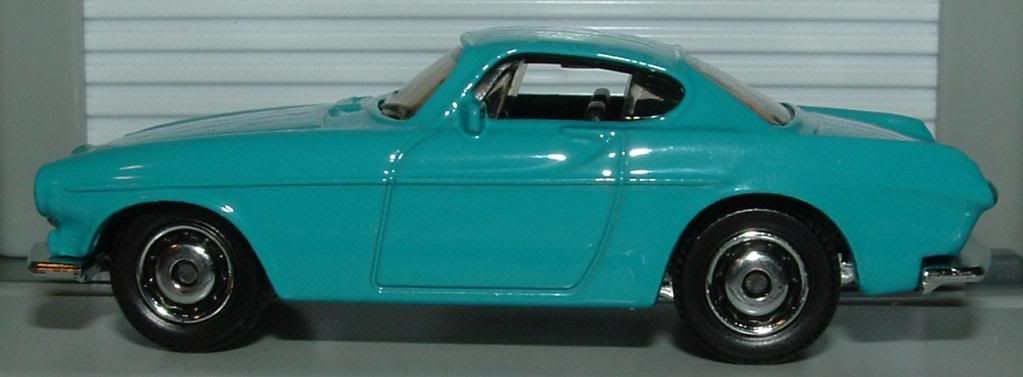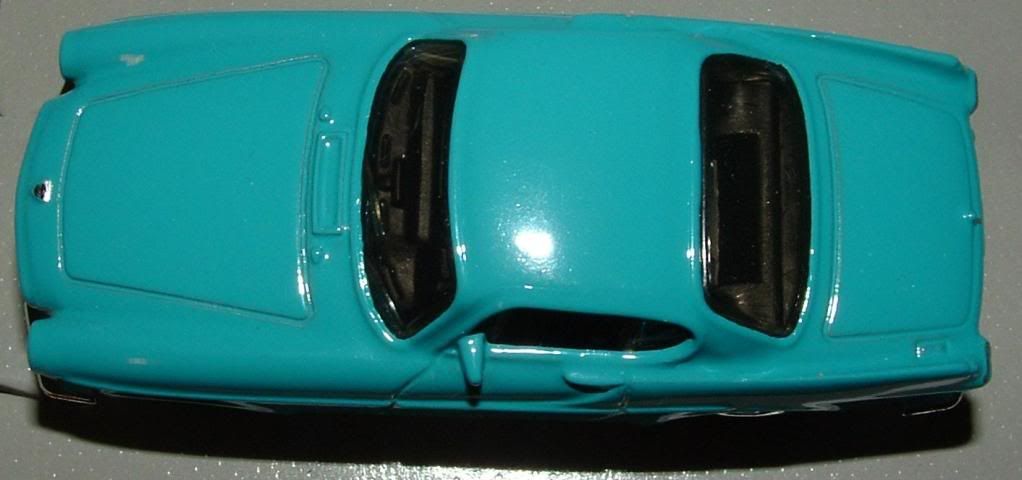
A blog focusing on 1/64 diecast from such popular brands as Hot Wheels, Matchbox, Johnny Lightning, M2 Machines, GreenLight, Tomica, Yat Ming, Majorette, MotorMax, Siku, Corgi, Guisval, Playart, Ertl, Zylmex, Racing Champions, & many more. Swifty's Garage features a daily Car Of The Day and news updates from your favorite brands!
Monday, February 28, 2011
Car Of The Day: February 27, 2011 (Belated)
Today's car of the day is Matchbox's 1969 Volvo P1800.
The project was started in 1957 because Volvo wanted a sports car, despite the fact that their previous attempt, the P1900, had been a disaster, with only 68 cars sold. The man behind the project was an engineering consultant to Volvo, Helmer Pettersson, who in the 1940s was responsible for the Volvo PV444. The design work was done by Helmer's son Pelle Pettersson, who worked at Pietro Frua at that time. Volvo insisted it was an Italian design by Frua and only officially recognized that Pelle Pettersson designed it in 2009. The Italian Carrozzeria Pietro Frua design firm (then a recently acquired subsidiary of Ghia) built the first three prototypes, designated: P958-X1, P958-X2 and P958-X3.
In December 1957 Helmer Petterson drove X1, (the first hand-built P1800 prototype) to Osnabrück, West Germany, headquarters of Karmann. Petterson hoped that Karmann would be able to take on the tooling and building of the P1800. Karmann's engineers had already been preparing working drawings from the wooden styling buck at Frua. Petterson and Volvo chief engineer Thor Berthelius met there, tested the car and discussed the construction with Karmann. They were ready to build it and this meant that the first cars could hit the market as early as December 1958. But in February, Karmann's most important customer, Volkswagen VAG, forbade Karmann to take on the job. They were afraid that the P1800 would compete with the sales of their own cars, and threatened to cancel all their contracts with Karmann if they took on the coachbuilding of this car. This setback almost caused the project to be abandoned.
Other German firms NSU, Drautz and Hanomag were contacted but none of them were selected because Volvo did not believe these firms met their manufacturing quality control standards.
It began to appear that Volvo might never produce the P1800. This motivated Helmer Petterson to obtain financial backing from two financial firms with the intention of buying the components directly from Volvo, and marketing the car himself. At this point Volvo had made no mention of the P1800 and the factory would not comment. Then a press release surfaced with a photo of the car, putting Volvo in a position where they had to acknowledge the car's existence. These events influenced the company to renew its efforts, the car was presented to the public for the first time at the Brussels Motor Show in January 1960 and Volvo turned to Jensen Motors whose production lines were under capacity, and they agreed to a contract of 10,000 cars. The Linwood, Scotland, body plant of manufacturer Pressed Steel was in turn contracted by Jensen to create the unibody shell, which then shipped via rail to be assembled at Jensen in West Bromwich, England. In September 1960, the first production P1800 (for the 1961 model year) left Jensen for an eager public.
The engine provided was the B18 (B for the Swedish word for gasoline: Bensin; 18 for 1800 cc displacement) with dual SU carburettors, producing 100 hp (75 kW). This variant (named B18B) had a different camshaft from, and higher compression than, the slightly less powerful twin-carb B18D used in the contemporary Amazon 122S. The 'new' B18 was actually developed from the pre-existing B36 V8 engine employed in Volvo trucks at the time. This cut production costs, as well as furnishing the P1800 with a strong engine boasting five main crankshaft bearings. The B18 was matched with the new and more robust M40 manual gearbox through 1963. From 1963 to 1972 the M41 gearbox with electrically actuated overdrive was a popular option. Two overdrive types were used, the D-Type through 1969, and the J-type through 1973. The J-type had a slightly shorter ratio of 0.797:1 as opposed to 0.756:1 for the D-type. The addition of this overdrive gave the 1800 series a defacto fifth gear, allowing it greater fuel efficiency and decreased drivetrain wear. Cars sold without overdrive had a numerically lower geared differential, which had the interesting effect of giving them a somewhat higher top speed (just under 120 mph) than the more popular overdrive models. This was because the non-overdrive cars could reach the engine's redline in top gear, while the overdrive-equipped cars could not, giving the latter a top speed of roughly 110 mph (177 km/h).
For more information and pictures of the real car please visit: Volvo P1800
Here's a Volvo that even Ivan should love- the P1800. What a gorgeous car! The Matchbox model is not perfect (I think the Corgi captured the lines of the real car better), but the color, the detailing, and the tampos are perfect. I can't understand why this casting is such a pegwarmer here. I can grab both this color and the red one side by side at K-Mart right now.
A 1966 Volvo 1800S owned by Irv Gordon of East Patchogue, New York, USA has the Guinness world record for highest mileage in the same vehicle he has been driving for more than 40 years. It had covered in excess of 2,219,751 miles (3,572,343 km) by March 2004, and passed the 2,600,000-mile (4,180,000 km) mark by October 2007. As of November, 2009, the car is at 2.7 million miles and the owner is now targeting the three million mile mark.
He has driven about 26,000 of those miles outside of the U.S., in Canada and Mexico, as well as in Europe. "In Sweden, we drove to Volvo's global headquarters to see where the P1800 was born", Gordon said.
On April 2, 2002, Gordon and his 1800S were guests on The Tonight Show with Jay Leno, after reaching the two million milestone.
As of July 2010, Gordon reached 2.8 million miles for his 70th birthday, and announced that he hopes to reach 3 million by the time he turns 73. That feat will require him to drive an average of around 5,500 miles per month.
Subscribe to:
Post Comments (Atom)






No comments:
Post a Comment